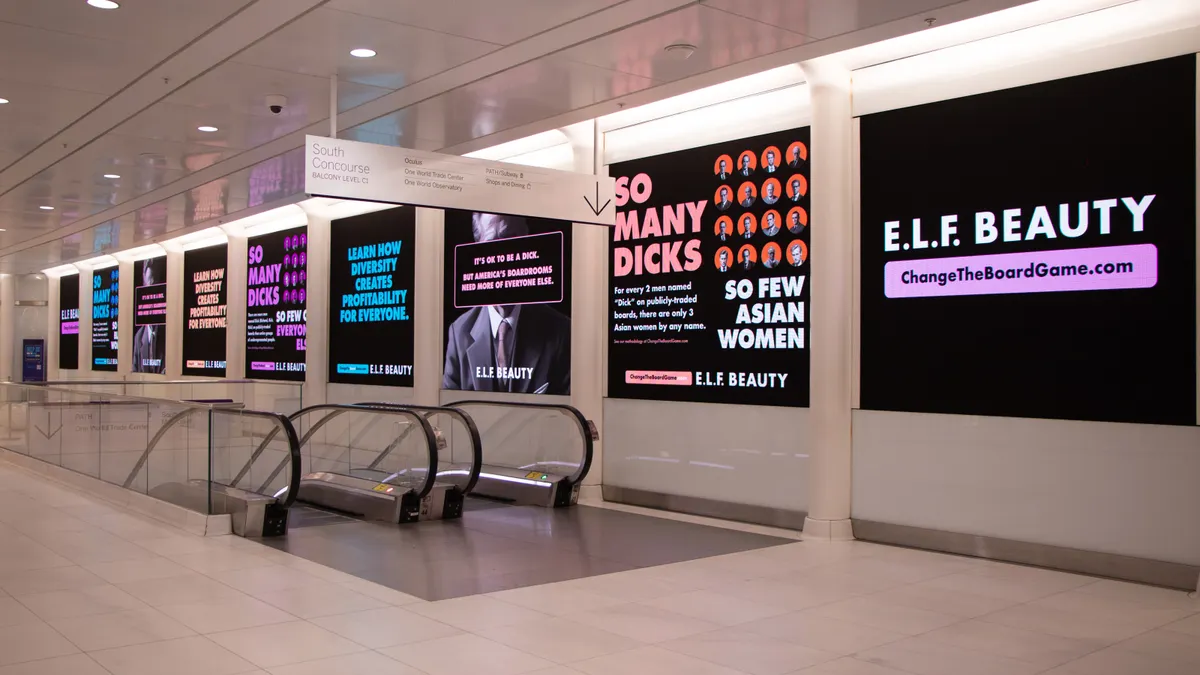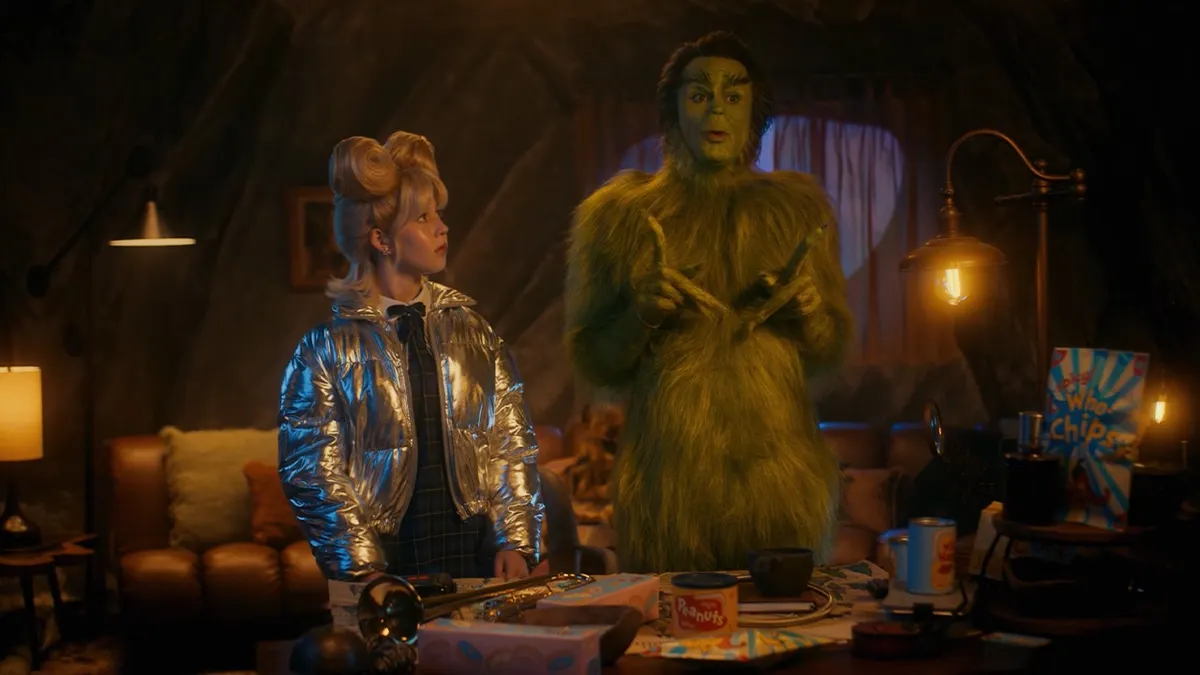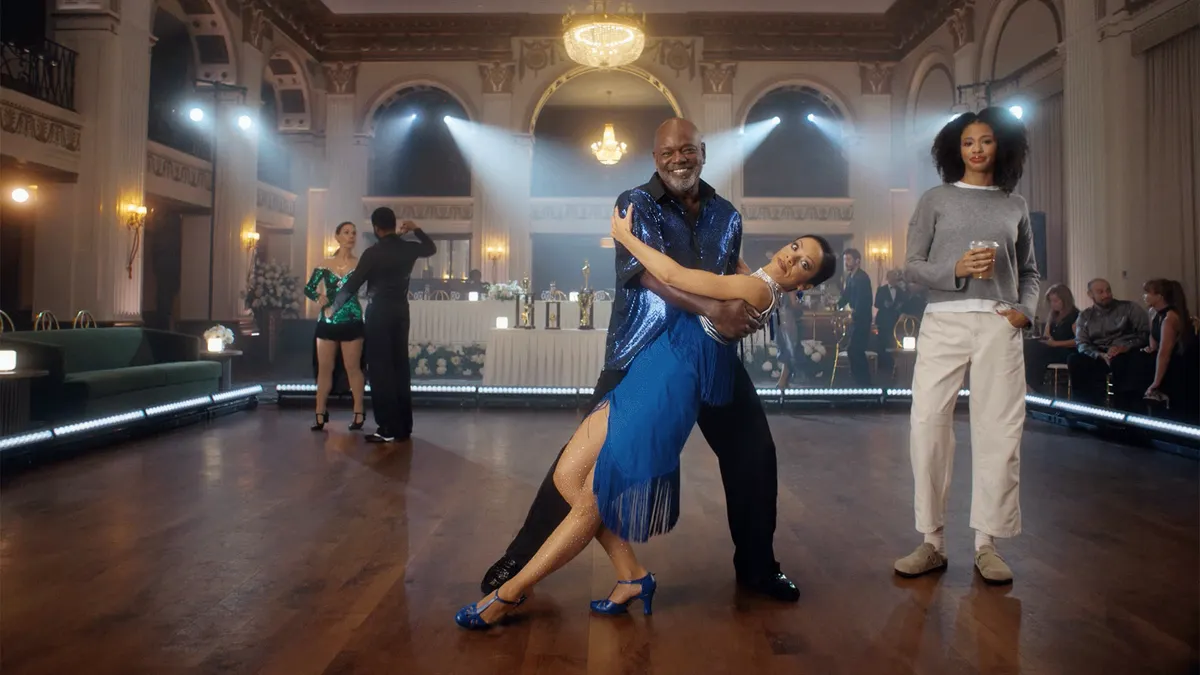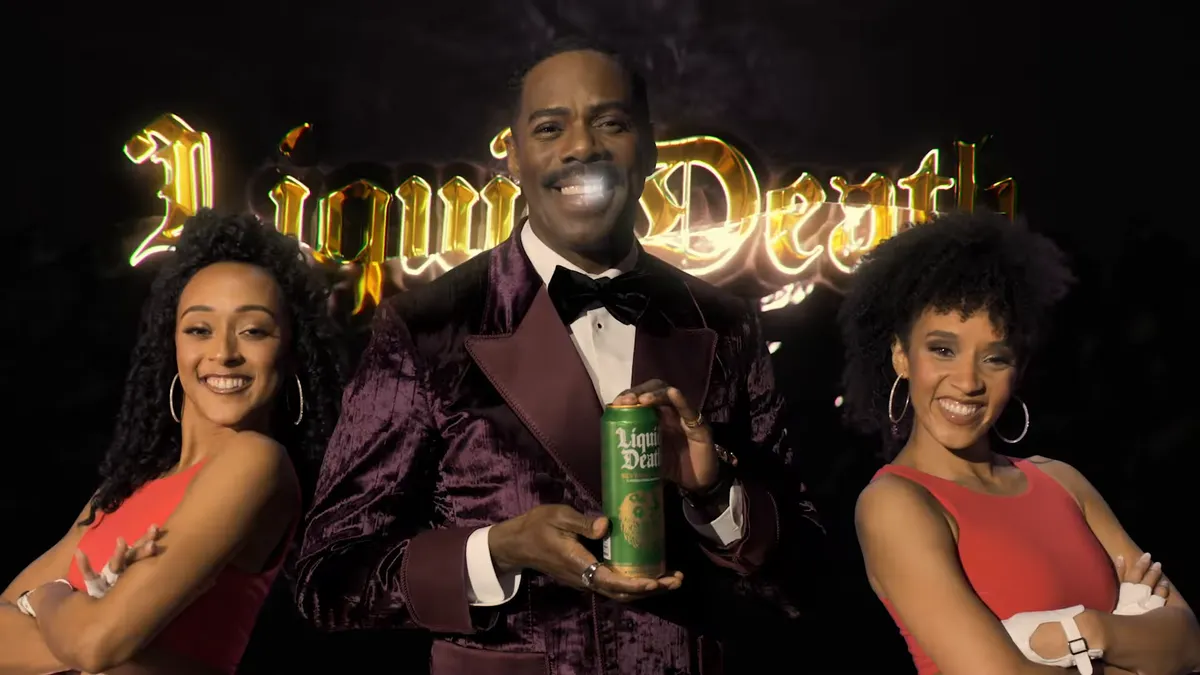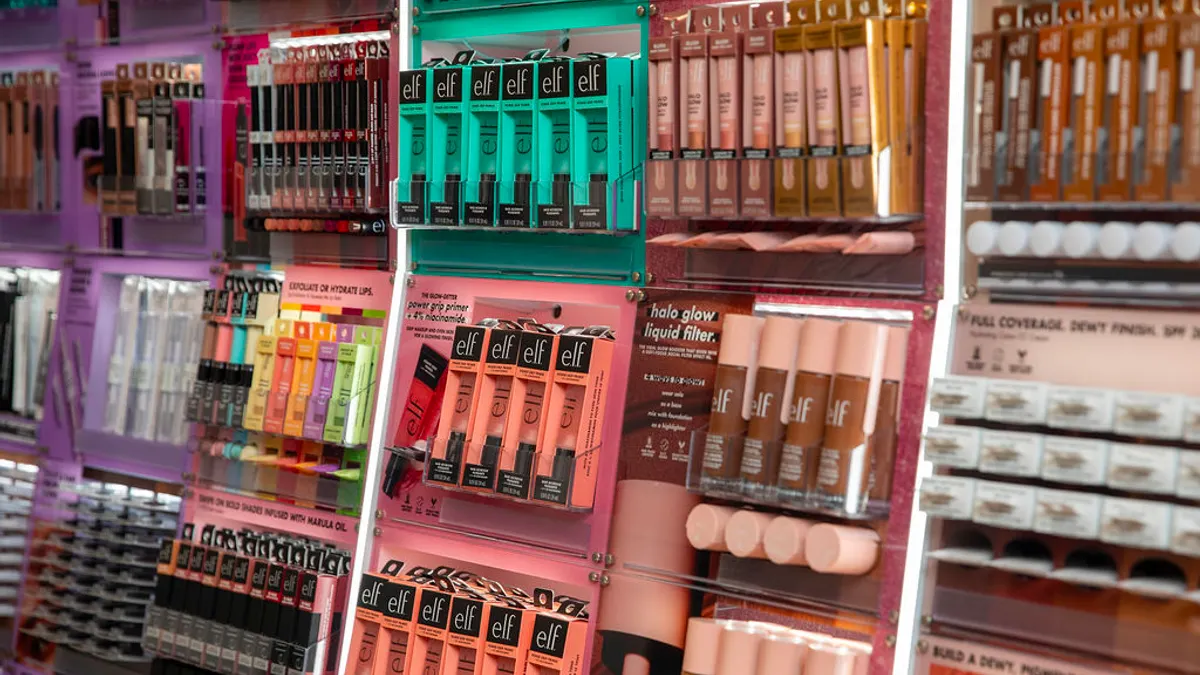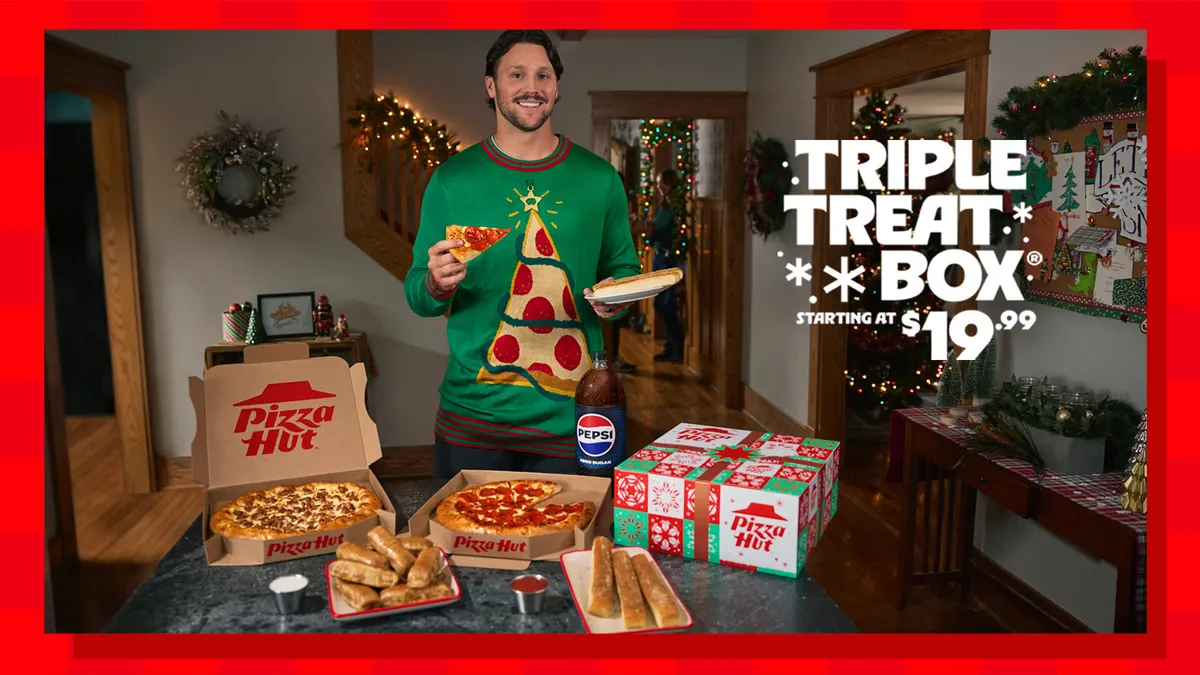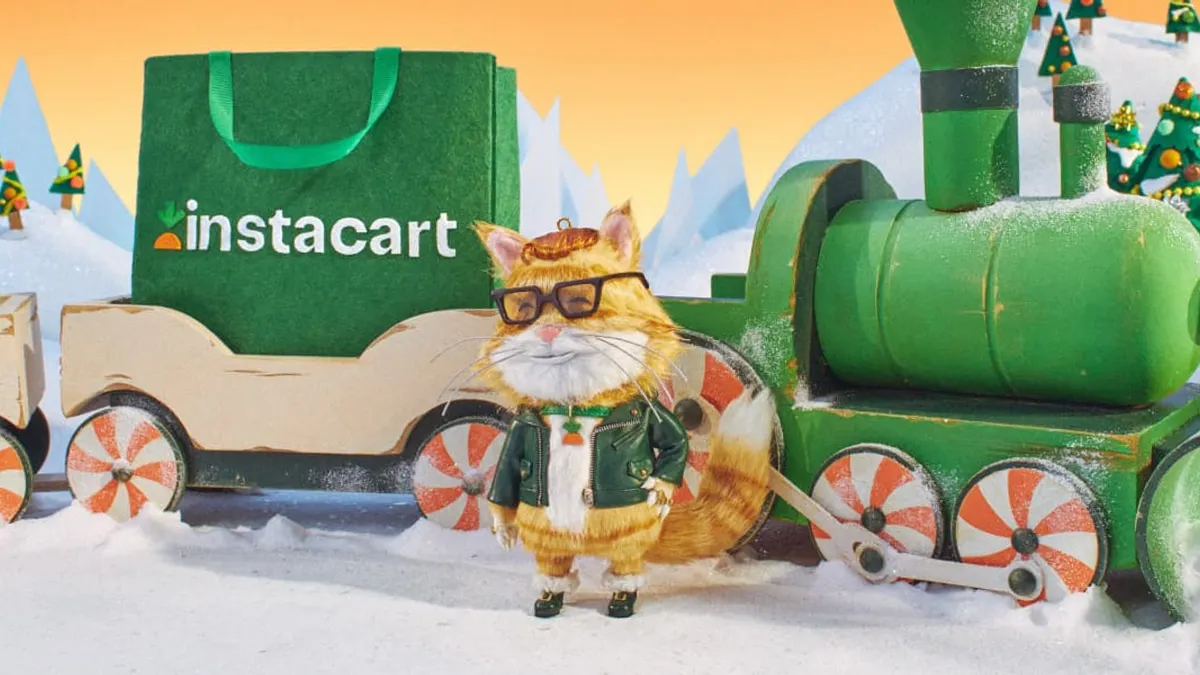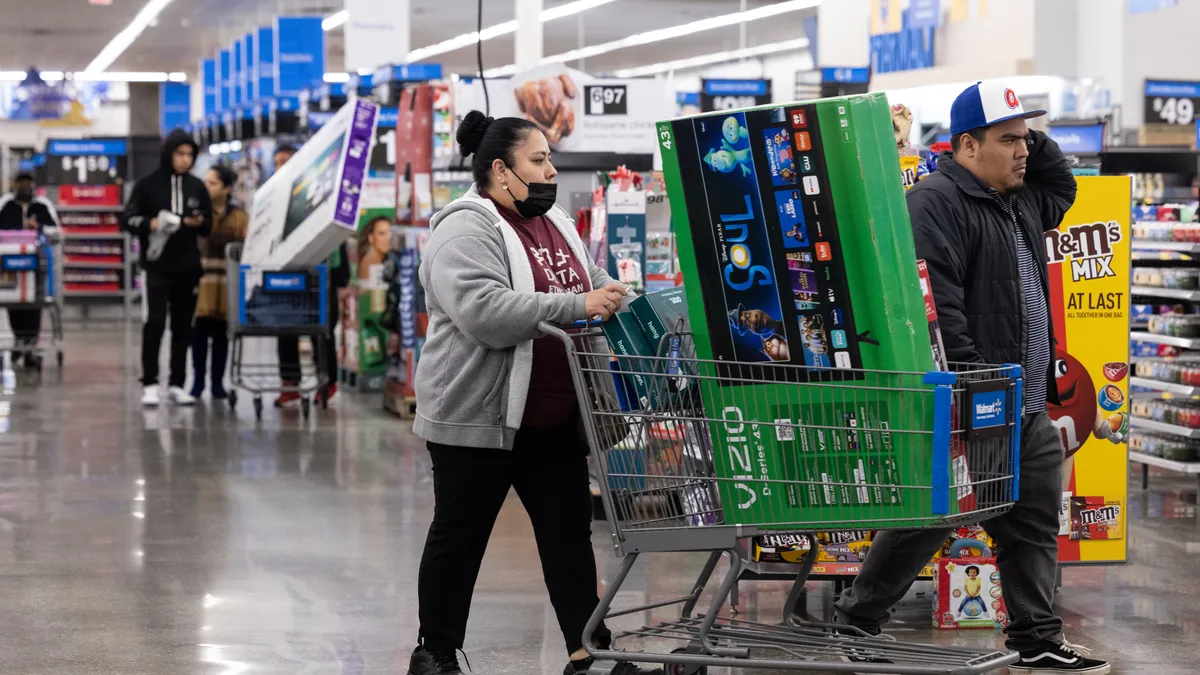For almost 170 years, Folgers has tried to be the best part of waking up for millions of Americans.
It definitely has not been an easy task, given tough competition in the coffee space, new trends and seismic shifts in how and where people drink coffee.
But the J.M. Smucker-owned brand has prevailed at the grocery store, leading in ground coffee sales last year with $1.09 billion, according to Statista. And it’s done well with consumers, too, ranking as one of the packaged ground coffees they are most likely to buy.
Tina Meyer-Hawkes, vice president of marketing for Smucker's coffee division, is responsible for maintaining the allure of the trademark aroma of Folgers mountain-grown beans and helping the brand evolve to serve today’s younger consumer — without leaving behind older generations who have enjoyed it their entire lives. It’s a delicate balance for Smucker, she told Food Dive.
“It's been really an asset to us to have all this rich history and memories,” Meyer-Hawkes said. “We've done a lot of research and even the youngest consumers ... will have these wonderful memories of times at home, times with grandparents. But that said, we want to make sure that we then leverage that and say, ‘OK, that's great that you have those memories, but we need to show up for you today.’ ”
Coffee is extremely important to Smucker. Folgers, which the company acquired from Procter & Gamble in 2008, is the largest piece of the Ohio company’s coffee division. It also owns several other big brands, including Dunkin’ Donuts grocery store packaged coffee, Cafe Bustelo and Pilon coffees.
According to slides from Smucker’s fourth quarter 2019 earnings report, coffee made up 27% of the company’s $7.8 billion in total sales during the fiscal year. More than half of that coffee was sold as mainstream roast and ground beans. In its most recent quarter, coffee sales were down 5% compared with a year ago, though Smucker’s earnings report states that is partially because of promotions and lower costs for green coffee beans.
While the company’s coffee holdings are vast, competition is percolating as Big Food scoops up brands and moves toward consumers’ pantries and into their hands with innovative varieties. Meyer-Hawkes said Folgers spends its time trying to provide what consumers seek.
But that's proving increasingly challenging. With more options in the grocery store, Folgers is losing its strong lead in the market. Analysts said Starbucks' CPG coffee will be the biggest threat. After all, Nestlé paid $7.15 billion last year for the right to sell the coffee shop's beans and products at grocery stores around the world. Nestlé has a much broader reach and could tap into that to market and sell the Starbucks brand.
CEO of New England Consulting Group Gary Stibel said the company has smartly tapped into the popular attributes of the coffee brand to keep it resonating with its core consumers. Stibel worked on Folgers years ago, when it was owned by Procter and Gamble.
"The principal thing that has kept Folgers at the top of the pile is advertising and marketing. That's number one," Stibel told Food Dive. "Their advertising is compelling. It's emotional. It's heartwarming, but ... you can smell the coffee in the ad. And I don't care whether you're talking about TV advertising or digital advertising, ... they have stayed true to their target audience."
From the Gold Rush to today
Some older brands trying to show their relevance today might want to hide their long history, presenting themselves as instead as new, cutting edge and hip.
But Folgers plays up its history. It has two websites that outline what the brand has done since its founding through product launches, packages and ad campaigns.
“The thing that we've learned, which is so fantastic, is the history of the brand actually is a benefit to us,” Meyer-Hawkes said. “The history gives us the credibility to ... be the brand that we are.”
One website is a detailed timeline of the Folgers brand, starting in 1850 when 14-year-old James Folger and his brothers came to San Francisco from Nantucket. The brothers were in search of gold, while James got a job with the Pioneer Steam Coffee and Spice Mills — which he eventually bought out and named after himself.
The timeline includes milestones in the company’s history such as the factory’s survival of the 1906 San Francisco earthquake, the movement of its roasting plant to New Orleans in 1960 and the acquisition by Smucker in 2008.
“We've done a lot of research and even the youngest consumers ... will have these wonderful memories of times at home, times with grandparents. But that said, we want to make sure that we then leverage that and say, ‘OK, that's great that you have those memories, but we need to show up for you today.’ ”

Tina Meyer-Hawkes
Vice president of marketing, Smucker's coffee division
But it also includes entries that show the attention the company pays to its product and consumers. An 1880 entry shows how Folgers was the first coffee brand to have experts test the smell and taste of shipments of beans. An 1889 mention cites the founder’s son, James Folger II, who wrote in a letter after taking the company over that in business, “money-making was always secondary to a good reputation.” It even discusses the 1953 launch of Folgers instant coffee. The product was not up to customer expectations in its first iteration, so it was pulled from the market, improved and relaunched five years later.
Everything that Folgers does plays into this story, Meyer-Hawkes said. But just because the brand highlights its history, doesn’t mean that it doesn’t see itself as new and cutting edge, she said.
“J.A. Folger launched coffee back in 1850 when the gold miners were going out west and he showed them how to brew coffee,” she said. “And so it's kind of a nod to the trailblazers of today. These younger consumers are trying to forge their own way. ... Our storytelling is relevant for consumers of today.”
Meyer-Hawkes said there’s even more about the coffee that stretches from the past to the present day. The company employs master cuppers — professionals trained to detect nuances in taste, aroma and color of coffee. With this attention to detail, she said, a cup of Folgers Classic Roast today should taste like a cup from almost 170 years ago. That consistency is important to cultivate long-term fans.
While the largest portion of loyal Folgers drinkers are baby boomers, Meyer-Hawkes said the brand is focusing more on getting millennials to drink the coffee. Part of this involves being where they are: in K-cups, at colleges and universities, at healthcare facilities and offices. Folgers also has increased the product's offerings by rolling out trendier drinks popular with consumers.
Trailblazing in many senses
While Folgers doesn’t want to change its products that have always been beloved, the company knows that younger consumers are looking for darker roasts, convenient ready-to-drink options and an exciting backstory.
The brand already has an exciting history, and Meyer-Hawkes said Smucker highlighted its founding last year when it created 1850, a premium brand that targets millennials.
The brand was created “in a very different spirit, focusing more on … those younger consumers that are looking for a dark roast," Meyer-Hawkes said. "It’s really showing them that this brand has really evolved to where they're going today. So, it's around kind of this hustle, this idea around this energy that consumers have for … life and their own path and the trailblazing spirit.”
“J.A. Folger launched coffee back in 1850 when the gold miners were going out west and he showed them how to brew coffee. And so it's kind of a nod to the trailblazers of today. These younger consumers are trying to forge their own way. ... Our storytelling is relevant for consumers of today.”

Tina Meyer-Hawkes
Vice president of marketing, Smucker's coffee division
Meyer-Hawkes said Folgers keeps up with trends and consumers with an equal blend of research and development and marketing. R&D is important to figuring out what consumers want — and it’s relatively easy because of Smucker's deep portfolio of coffee brands. She said the company realized how important cold brew was after seeing demand in the Dunkin’ brand.
Ready-to-drink coffee also is becoming more important to younger on-the-go consumers. While Folgers currently has no ready-to-drink options, some have been developed for 1850. Meyer-Hawkes said there will be more ready-to-drink variations coming to stores this fall.
With several brand reinventions and new ideas throughout its history, Folgers has been able to stay competitive. Meyer-Hawkes said she doesn’t see the brand giving up its top spot in sales any time soon — though it will take hard work.
“We have a right to win in this space … as a trusted brand, high brand awareness, so much affinity,” she said. “We obviously don't want to rest on that. We want to make sure we're continuing to sharpen our pencil and do the right thing for consumers going forward. So, I see a bright, bright future for Folgers."
What's percolating in the future?
Analysts said there is little doubt that ground coffee is not the engine for growth. Consumers today are gravitating toward ready-to-drink options and cold-brewed coffees. Sales of pods for Keurig-style single-serve machines are staying stable. And consumers can easily skip the coffee aisle altogether, going instead to Starbucks to pick up a custom-brewed coffee.
Stibel said Starbucks has been beneficial to legacy coffee brands such as Folgers. Fifteen to 20 years ago, he said, coffee had been declining. Starbucks reinvigorated the coffee culture, bringing people to a place where they saw coffee as a beverage to relax with throughout the day. And Keurig's single-cup brewing innovation gave consumers the right to indulge in a variety of specialty coffee drinks at home.
Matthew Barry, Euromonitor's senior beverage analyst, told Food Dive the variety available on shelves creates a "confusing array" of choices for consumers who once had only had a few brands to pick from. Still, despite the plethora of brands, Stibel said most coffees generally taste the same. The difference often comes down to marketing.
Folgers seems to be on its own in leveraging its legacy to improve marketing. Maxwell House, owned by Kraft Heinz, has been on the market more than 125 years. Before the CPG giant's new CEO Miguel Patricio took the helm and set his focus on reinvigorating legacy brands, reports indicated the company was looking to divest it. Maxwell House's newest push to attract new drinkers is adjusting its caffeine levels.
Barry said Folgers is doing the right thing with its promotion of the 1850 brand. While Euromonitor hasn't completed a full analysis of 1850, he said it is apparent that Folgers needs to convince younger consumers that a legacy brand can give them a premium coffee experience.
"You need to use the legacy in a way that benefits you, that shows expertise in premium," he said. "In the alcoholic drink segment, a lot of the older brands could do this, right? Like the spirits: There's your whiskey brand, right? You play into that legacy: We've done this for generations. This is what makes us premium."
Barry said that no matter what consumers are reaching for — be it a single-serving can of ready-to-drink coffee or a bag of Folgers beans — the coffee market and legacy brands aren't going anywhere.
"It's a gradual fading for a lot these older brands," Barry said. "The standard ground segment especially, the size is so huge right now that they could post declines every year for decades and still be a fairly sizeable segment. The same way that carbonated soft drinks have been in decline, probably since ... the '90s, and it's still a massive segment. They haven't gone anywhere. They just haven't been as prominent as they once were."







